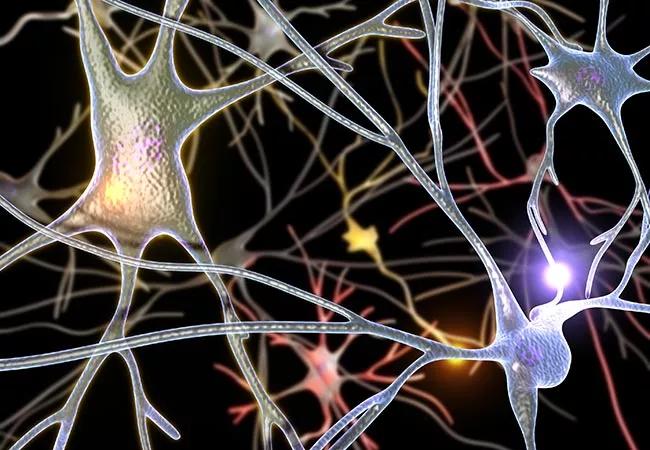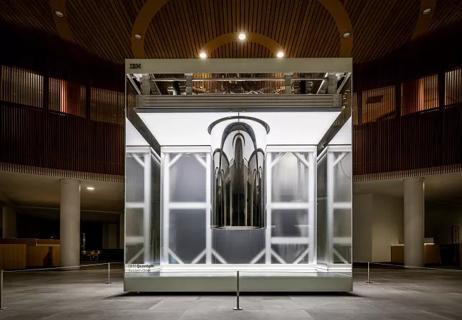Assessing the role of circadian disruption, characterizing patterns of thalamic atrophy

A Cleveland Clinic neuroscientist specializing in multiple sclerosis (MS) has received two grants from the National Institute of Neurological Disorders & Stroke to explore two known or likely contributors to MS progression: circadian disruption and thalamic atrophy.
Advertisement
Cleveland Clinic is a non-profit academic medical center. Advertising on our site helps support our mission. We do not endorse non-Cleveland Clinic products or services. Policy
The grants, which total nearly $2.8 million, are going to Ranjan Dutta, PhD, assistant staff in the Department of Neurosciences in Cleveland Clinic’s Lerner Research Institute. Both involve collaborative work with other Cleveland Clinic researchers and use of well-characterized human MS brain tissues from Cleveland Clinic’s MS brain donation and rapid autopsy program, one of the few of its kind in the world.
With the first grant — $2.3 million over five years — Dr. Dutta and Sujata Rao, PhD, associate staff in the Cleveland Clinic’s Department of Ophthalmic Research, will investigate a potential link between the circadian cycle and remyelination. Circadian and/or sleep disruptions are common in people with MS, but their roles in affecting the process of myelin repair in the context of MS are unknown.
“Intriguingly, oligodendrocyte progenitor cells (OPCs), which form oligodendrocytes for production and maintenance of myelin, are present in regions of demyelination, but they fail to perform their function in repairing the damage,” notes Dr. Dutta. “Our initial data have led us to believe that oligodendrocyte-specific circadian disruption could inhibit remyelination, so we have teamed up with Dr. Rao, an expert in circadian research and the cell-specific alteration of circadian disruption.”
Using samples from patients with MS and sleep disruption, together with MS autopsy tissues and animal models with cell-specific deletion and overexpression of key circadian genes, the researchers will explore whether circadian disruption can lead to remyelination failure in MS.
Advertisement
“Using animal models with OPC-specific deletion of circadian pattern regulators, we could easily identify the role of circadian disruption in myelin repair,” says Dr. Rao. “Outcomes of this project will be helpful in guiding development of drugs directed toward resetting the circadian rhythm to improve clinical outcomes for people with MS.”
With the second grant — $444,000 over two years — Dr. Dutta and Kedar Mahajan, MD, PhD, a neurologist in Cleveland Clinic’s Mellen Center for Multiple Sclerosis Treatment and Research, will explore the molecular basis of thalamic volume atrophy in MS.
Deep gray-matter structures in the brain, including the thalamus, have received significant attention in MS research due to their early volume loss. While thalamic atrophy is a predictor of disability and cognitive impairment in MS, the exact mechanisms underlying thalamic degeneration are not well characterized.
Dr. Mahajan’s previous work identified nonthalamic demyelination as a major determinant of regional atrophy and found that specific regions were particularly correlated with clinical disability. In this study, the researchers will use human MS brain samples collected through Cleveland Clinic’s MS brain donation program and modern analytical tools to identify and validate patterns of thalamic subregional volume loss in MS. They will then integrate the data with thalamic imaging measures and neurological outcomes from Dr. Mahajan’s clinical practice to enable a comprehensive understanding of thalamic changes.
Advertisement
“When it is completed, this study will provide a significant step toward understanding how neuronal loss occurs in the brains of MS patients and provide an effective tool for monitoring and eventually preventing neurodegeneration in these patients,” says Dr. Dutta.
“Currently, there is no cure for progressive MS,” he adds, “so it is critical that we continue to pursue comprehensive understanding of the mechanisms that drive MS progression in order to develop novel therapies.”
Advertisement
Advertisement

First full characterization of kidney microbiome unlocks potential to prevent kidney stones

Researchers identify potential path to retaining chemo sensitivity

Large-scale joint study links elevated TMAO blood levels and chronic kidney disease risk over time

Investigators are developing a deep learning model to predict health outcomes in ICUs.

Preclinical work promises large-scale data with minimal bias to inform development of clinical tests

Cleveland Clinic researchers pursue answers on basic science and clinical fronts

Study suggests sex-specific pathways show potential for sex-specific therapeutic approaches

Cleveland Clinic launches Quantum Innovation Catalyzer Program to help start-up companies access advanced research technology